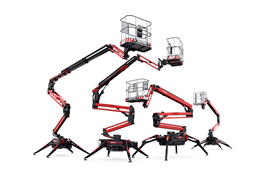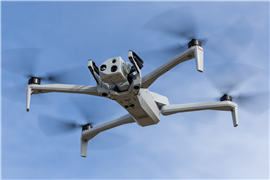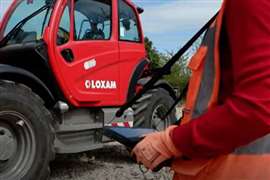The pace of change
09 February 2015

I can still vividly remember that when I started my first, real, post-education job I was allocated a desk with a phone, an in-tray and an out-tray.
The post trays were cleared four times per day and anything that needed typing would take at least 24 hours to leave the building as it had to go via an internal typing pool.
That was the sum total of business information technology available to me – although if something was super-urgent you could take it to a telex operator who lived in a special room and they would type your hand-written message into the telex machine.
When I went into operations management (in logistics) it was in a world where measurement of volume and quality of service was based on sampling of individual loads and individual contracts. Individually tracked activities were rare, manual and commanded a significant price premium.
Now even if this sounds like a description of Roman times, it’s important to remember that things still got done, most businesses made money and customers were more often than not happy with the level of service they received. Which brings me to the question “what has technology actually done for service industries in general and the rental industry in particular”?
One thing it hasn’t done (at least not yet) is to change human nature. The reason things, by and large, worked before information technology became ubiquitous, is because most people do want to perform the job they’re given to do as well as they’re able to do it under the constraints in which they operate.
So, technology is not necessary to get the majority of things done to an acceptable standard most of the time.
Performance
Technology has, however, helped management to see the effects of defective performance, and to correct that defective performance much sooner.
With modern technology, companies can now see on the same day if they have a spike in equipment breakdown in a particular area and then respond to the root cause of that problem the day following.
At a more granular level we can see if the truck despatched with the customer’s equipment is stuck in traffic and therefore likely to be late on site – giving us the opportunity to automatically alert the customer with a text and not waste their time.
This opportunity to spot and actively manage customer-affecting defects is certainly a huge step forward from where we were thirty, or even ten, years ago.
We can also see, at a glance, if the piece of equipment a customer wants is due to become available from the ending of an existing hire, rather than leafing through mounds of T-cards – so we are less likely to miss sales opportunities.
We can then use our huge database of previous transactions to build dynamic pricing systems to ensure we are offering logical, but profitable pricing to customers based on their individual needs and our fleet’s availability.
Challenge
Our challenge is that across much of the industry, we are still not doing any of these things. In many cases we have simply used IT to speed up the process of counting transactions compared to those old, manual sampling systems and we are recording the same old operational steps, but on screens rather than T-cards or pieces of paper.
We might have saved ourselves a bit of time, or at least some paper, compared to the old ways but we haven’t really changed the customer experience, because we’re still prisoners of the “old ways” in our thinking.
80% plus of things we do will normally go well, because our people naturally want to do them well. The correct use of technology, it seems to me, is about preventing, or reacting rapidly to, the 20% that causes irritation, inefficiency, loss of pricing discipline or outright danger.
The big challenge is how to find technology-aware managers who can also think about how operational flaws occur, how to spot them and then how to prevent them.
The best IT system in the world won’t do that thinking for us, but if we don’t do it, be sure that someone else will do it and we’ll risk being the victim.
Kevin Appleton is former CEO of Lavendon Group plc and former divisional chairman of Travis Perkins plc. He is currently managing director of Yusen Logistics UK, non-executive chairman of Horizon Platforms, non-executive director at Ramirent Oyj and non-executive director of the Freight Transport Association. To comment on these articles please email: [email protected]
This is a column from the January/February issue of IRN. For the full feature, please subscribe to the magazine: http://www.khl.com/subscriptions
STAY CONNECTED



Receive the information you need when you need it through our world-leading magazines, newsletters and daily briefings.
CONNECT WITH THE TEAM











